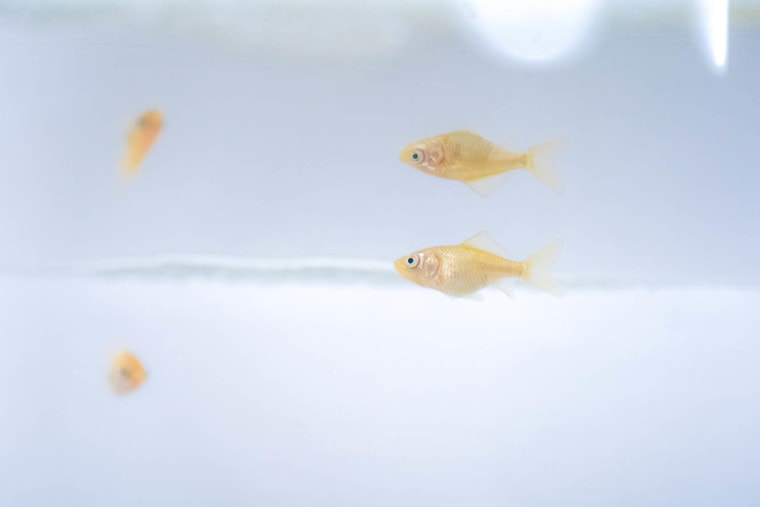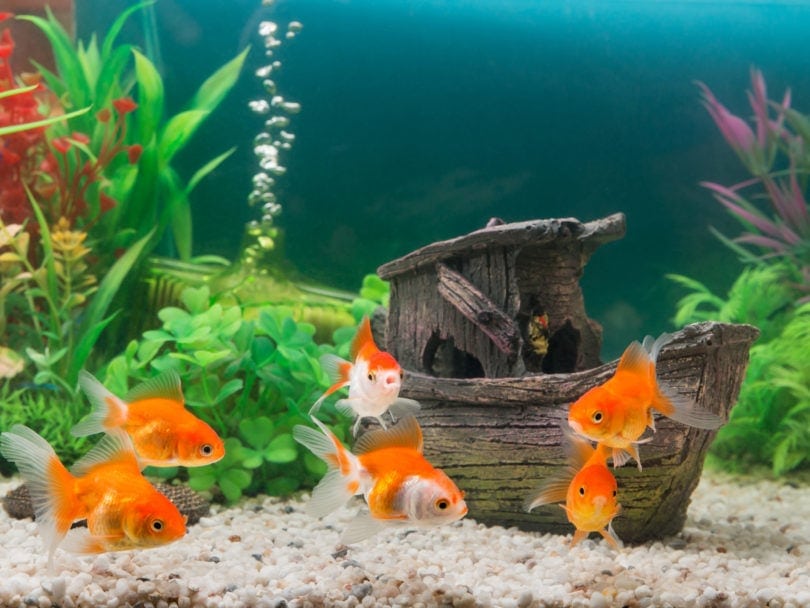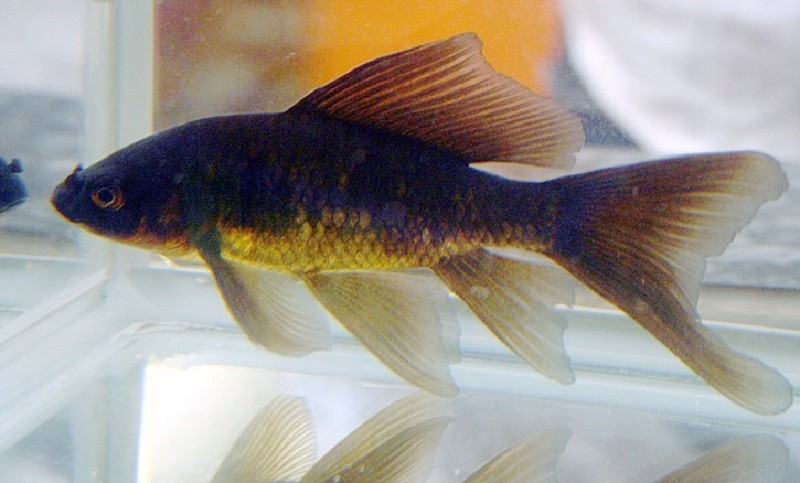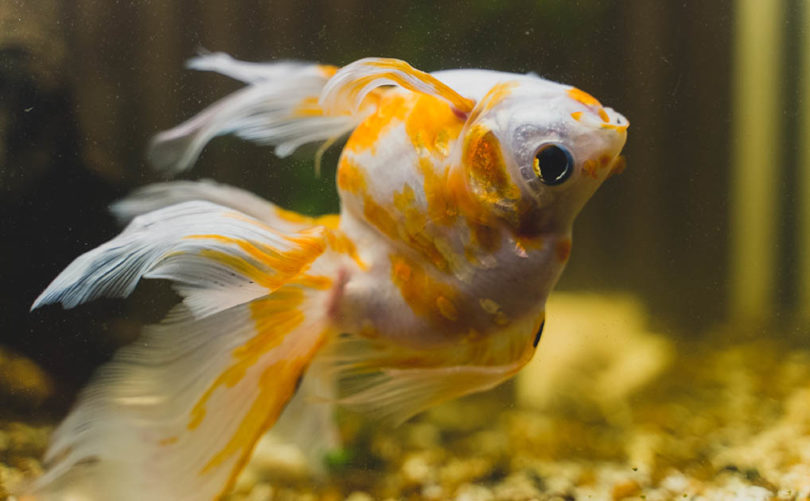
Having goldfish as pets is rewarding. Taking it to the next level and breeding your fish is a challenge that some fish keepers find interesting. However, it’s not as simple as putting a male and female together to let nature take its course. You have to prepare the setting and provide proper nutrition so the young can thrive.
When scientists talk about how dependent offspring enter the world, they’ll refer to them as either altricial or precocial. The former are animals that are essentially helpless at birth, such as puppies, kittens, and humans. Precocial species are ready to tackle the challenges of life right from the start, including ducklings and most fish.
Evolution decides the path. Remember that the goal of an animal’s life is to live long enough to reproduce and pass on their genes. Altricial young have the benefit of parents — one or both — protecting them. It’s a different story for precocial animals. They are literally on their own from day one.
Setting Up a Temporary Home
Hobbyists often set up separate tanks for breeding adult fish for several reasons. It helps them focus on the goal without the distractions of competition and territorialism. It also protects the baby fish, or fry. While it may seem cruel, goldfish parents may eat their eggs. Opportunistic feeders won’t ignore a free meal.
It’s essential to plan ahead when breeding fish. A tank will take about 6 weeks to get fully established with the beneficial bacteria that will keep ammonia, nitrites, and nitrates in check. This time is necessary to avoid new tank syndrome, where spikes in toxic chemical compounds can make a tank inhabitable.

Breeding Goldfish
Goldfish, like many animals, rely on seasonal clues to trigger breeding responses. For example, birds and deer rely on the photoperiod or the length of daylight hours. Goldfish use temperature changes to signal the time for mating. To get your goldfish to breed, you must replicate the temperature drop that mimics winter and the uptick that occurs in spring.
The best way to do it is to proceed slowly to avoid shocking your fish. Remember that goldfish operate under a different time schedule that harkens back to their origins. Winter can be simulated by gradually dropping the temperature in their aquarium to 50–54°F (10–12°C). Fishkeepers only decrease the temperature on the aquarium chiller by 1.6–3°F (1–2°C) per day.
To simulate spring, a heater is used to slowly increase the temperature in their aquarium by 1.6–3°F (1–2°C) per day until the water reaches 68–74°F (20–23°C). This process takes about a week or so.
Once the trigger is set, then nature takes control. Males and females will start showing the telltale signs of mating behavior, such as chasing. The female will then show obvious signs of being gravid, with a bloated abdomen. She will lay her eggs on anything that they can stick to, such as plants or structures in the tank. Fertilization by the male is done externally.
- Related Read: Shipping and Moving Live Goldfish: Step-by-Step Guide
The First Days After Hatching
Goldfish fry are quite vulnerable when they first hatch, about 3–7 days after being laid. That’s why it’s necessary to remove the adult goldfish from the tank. They can and often do eat their young. The best chance that the young have to survive is in a tank with nothing that will devour them.
While the fry are mobile, they usually do not consume any food yet. They can survive for a period of time by absorbing their egg yolks before they hatch. Then, you can offer them brine shrimp. This food has a large amount of protein to support their development.
Not all eggs hatch, and rotting eggs or dead fry can cause a toxin spike in the aquarium. Therefore, they must be removed promptly. An egg that doesn’t hatch within 8 days of being laid is considered non-viable.
Two Weeks of Growth
Growth and development take a great deal of nutrition. Therefore, you should plan on feeding the goldfish four or five times a day to ensure proper growth. In addition, optimal water quality is vital, so make sure to keep up with water testing and maintenance to keep the conditions right. Make sure to siphon out any uneaten food or dead fry to avoid spikes in ammonia or other toxins.
A delicate balance still exists during this time. Bear in mind that some of the fry might not survive for genetic reasons or disease. Your predator-free setup gives them the best chance. Ecologists call this reproduction r-strategy. Survival is dicey at best for offspring and adults. The latter will have large numbers of young, with little parental investment that at least some will live.
A healthy diet is an excellent way to give goldfish fry an edge that they wouldn’t necessarily have in the wild. You can also offer them crushed-up pellets or powdered foods. Follow the same best practices of feeding only what you see them consume.
Weeks Three and Four
You’ll see radical changes in the fry as they start to develop fins and begin to look like baby fish. That will help them become more mobile. High-protein food sources are excellent ways to provide them with enough raw materials to support growth. You can also give them microworms, which are rich nutritional food.
Many goldfish die as a result of improper feeding, diet, and/or portion sizes – which can be easily prevented by proper education. That's why we recommend the best-selling book, The Truth About Goldfish, which covers everything about goldfish nutrition, tank maintenance, illnesses & more! Check it out on Amazon today.

One Month and Beyond
Feeding goldfish fry is a vital part of their survival. They have a much better chance of making it to adulthood in the artificial conditions of your tank setup than they ever would in the wild. Nevertheless, nature will cull the ones least likely to make that journey. Your job is to create the optimal environment and provide high-quality nutrition to help your goldfish take the next step.
Conclusion
Feeding goldfish fry is a vital part of their survival. They have a much better chance of making it to adulthood in the artificial conditions of your tank setup than they ever would in the wild. Nevertheless, nature will cull the ones least likely to make that journey. Your job is to create the optimal environment and provide high-quality nutrition to help your goldfish take the next step.
Related Reads:
- 6 Steps to Properly Quarantine a New Fish (Updated Guide)
- 7 Reasons Your Goldfish Is Turning White & What to Do About It
Featured Image Credit: kjnk, Shutterstock









